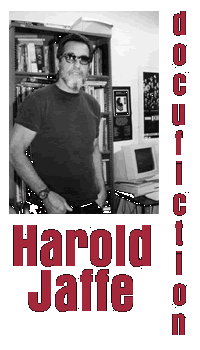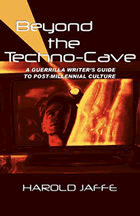|
Daw Aung San Suu Kyi is one of the world's renowned freedom fighters, having served as the symbol for Burma's (now Myanmar's) struggle for democracy since 1988.
Alberto Giacometti remained in the same small, cramped studio in Paris's 14th arrondisement for forty years.
Once, crossing the street to go to the café for his twice-daily coffee he was struck by a car, one of those armadillo-like Citroëns that only the French can drive.
She is the daughter of General Aung San, who negotiated Burma's independence from Britain in 1947 and was assassinated by rivals in that same year, when Suu Kyi was two years old.
As Giacometti was being struck by the Citroën, he thought to himself: Finally something is happening to me.
At that period he was constructing plaster images of figures no larger than his thumbnail.
Sculptures, he said then, had a likeness only when they were extraordinarily small.
Nonetheless, he added, their dimensions revolted me.
Suu Kyi studied at Oxford between 1964-7 where she met Michael Aris, a British lecturer on Tibetan culture.
(Aris actually was born in Cuba to a British father and French-Canadian mother).
Between 1969-71, Suu Kyi lived in New York where she worked in the UN as an assistant to U Thant, the Burmese Secretary General.
Evenings and weekends she volunteered at New York-area hospitals, supplying companionship and tutoring indigent patients in reading.
She returned to Oxford in 1972 and married Michael Aris.
They had two sons, Alexander and Kim.
She is remembered as a frail-seeming, but regally beautiful woman who learned to ride a bicycle around Oxford while wearing her sari.
Though reserved, Suu Kyi was reported to have a lively sense of humor. Once, she even had a taste of the British ale her fellow students were drinking; she did not like it.
In truth, much had happened to Giacometti since he came to Paris from Geneva by way of Stampa, Switzerland, near the Italian border, where he was born.
He collaborated with borderline psychotic Georges Bataille and was a favorite of the self-appointed chieftain of the Surrealists, Andre Breton.
Bataille and Breton despised each other and were notoriously critical of artists, though uncommonly fond of Giacometti.
Returning to Burma in 1988 to care for her ailing mother, she informed her husband that she was not sure when or if she would return to the UK.
In that same year, the long-time leader of the socialist ruling party, General Ne Win, stepped down, leading to mass demonstrations for a constitutional democracy, which were violently suppressed.
A military junta seized power.
When her mother died in 1989, Suu Kyi made a pledge to serve Burma as her mother and father did, even unto death.
Giacometti also maintained a close friendship with the brilliant but dour and opinionated Sartre, and was identified by many as the exemplary existentialist artist.
Giacometti did not consider himself either an existentialist or a surrealist.
His portraits of Sartre oddly resemble his portraits of the acerbic Stravinski, with whom he was also on excellent terms.
As a consequence, Suu Kyi felt compelled to enter the political arena to work for democratization.
After the example of Gandhi, she waged hunger strikes to release students and workers who were imprisoned illegally.
In an incident in the Irawaddy Delta she walked calmly toward military junta soldiers aiming their rifles at her.
They laid down their arms.
Her efforts eventuated in her being put under house arrest in 1989.
She was offered freedom on condition that she leave the country.
She refused.
The only other gifted visual artist I can think of who won difficult people over without cultivating them or even necessarily desiring their allegiance was Marcel Duchamp.
Giacometti and Duchamp, dissimilar as artists, resembled each other psychically.
Each had an extraordinary head -- literally.
The sort of head a gallery goer could view admiringly from every angle.
But their heads were no less different, one from the other, than their visual styles.
Giacometti's head projects an indisputable, if elusive, sentiment from the heart.
Duchamp's head -- aquiline, marmoreal -- resembles the death's head of a prince from a mythical kingdom somewhere in the northern regions where royal inhabitants occupy their time playing chess.
The military junta called general elections in 1990, which Suu Kyi's party, the "National League for Democracy" (NLD), won decisively.
Under normal conditions, she would have assumed the office of Prime Minister; however the junta refused to hand over power.
Although he was sometimes identified as a Communist and for a time was a close associate of the avowed Communist artist Louis Aragon, Giacometti repeatedly said that his art was generated neither by philosophy nor ideology.
The junta's action resulted in an international outcry and was instrumental in Suu Kyi winning the Sakharov Prize that year and the Nobel Peace Prize the following year.
She used the Nobel Peace Prize's $1.3 million to establish a health and education trust for the Burmese people.
Giacometti painted and sculpted for one reason, he said: he wanted to learn to see.
(Compare Duchamp who claimed to despise the emphasis on "retinal" art).
Diego, Giacometti's younger brother, sat for him virtually every day for seven consecutive years.
How many sculpted and painted wedge-shaped heads did Giacometti do of Diego?
Hundreds, many hundreds.
But still he claimed to have never gotten it right.
Suu Kyi was released from house arrest in July 1995, although it was made clear that should she leave the country to visit her family in the UK, she would be denied re-entry.
When her husband Michael Aris, a British citizen, was diagnosed with prostate cancer in 1997, the Burmese government denied him an entry visa.
Making the agonizing choice to remain in Burma, Suu Kyi never saw her husband again.
He died in March 1999, age 53.
She remains separated from her children whom she has not seen since 1992.
Somehow Diego's head eluded him.
To believe Giacometti, every head eluded him, which is why he would stop in the streets and stare at a stranger's face.
It being Paris, where the fou is proudly integrated into the culture, nobody seemed to mind the strange man with his grizzled head stopping, staring.
The Burmese economy meanwhile is a shambles.
People earn less than a dollar a day, and because the junta has closed hundreds of schools illiteracy is escalating.
Nearly fifty percent of Burmese children are reported to be malnourished.
Gatherings of more than four people are proscribed, and violators of the junta's edicts are subject to lengthy prison sentences, torture and execution.
Why do Giacometti's stick figures, many of which are life-size, seem to be on the verge of extinction?
Suu Kyi has been in prison or under house arrest since 1989.
She was imprisoned again May 2003 after the Depayin massacre, during which more than 100 of her supporters were beaten to death by the junta, who then attributed blame to the victims.
She was transferred from prison back to house arrest in late 2003 where she has remained ever since.
She suffers from heart and eye problems as well as a spinal disorder and has had surgery for an undisclosed illness.
Now 60-years-old, she has in recent photos a faded, ethereal look about her.
Maybe the better question is what keeps Giacometti's stick figures from fading into extinction?
A provisional answer might be endurance.
Suu Kyi remains steadfast.
She spends her time in her house communicating with adherents and visitors (those whom the junta permits to visit, which does not include her children).
She plays Bach on the piano, meditates, studies French and Japanese.
Giacometti was diagnosed with cancer in 1963.
He died in 1965 at the age of 64, painting and sculpting until the end.
When, a few summers ago, I visited his old studio in the 14th, it had been turned into an apartment complex.
There was not even a plaque to commemorate the forty years he labored there.
"Labored" may be the wrong word; "dreamt" is more accurate.
Of course dreams of a certain register amount to inadvertent labor.
In Giacometti's instance, his "dreams" were an inadvertent, visionary labor, though he surely would have rejected the elevated designation visionary.
Suu Kyi has called on people around the world to join the struggle for freedom in Burma, saying "Please use your liberty to promote ours."
Most westerners know precious little about Burma and would have difficulty locating it on a map of the world.
After his diagnosis of cancer in 1963, Giacometti was reported to have said: The terrible thing about dying is that you can do it only once.
--2005
|

 from Beyond the Techno-Cave:
from Beyond the Techno-Cave: